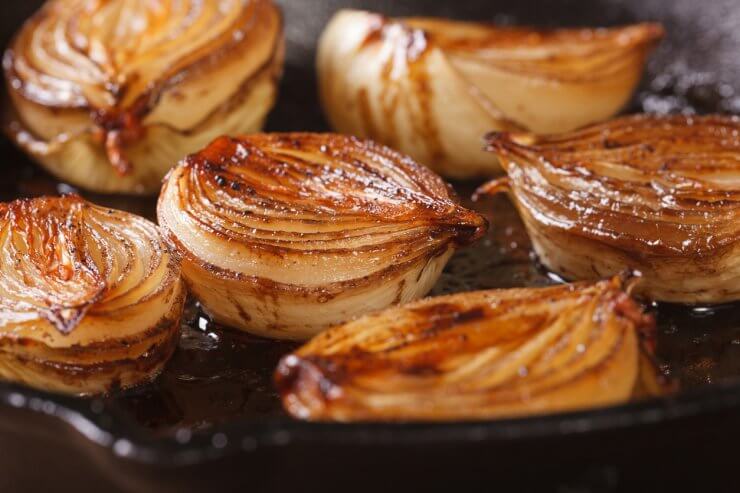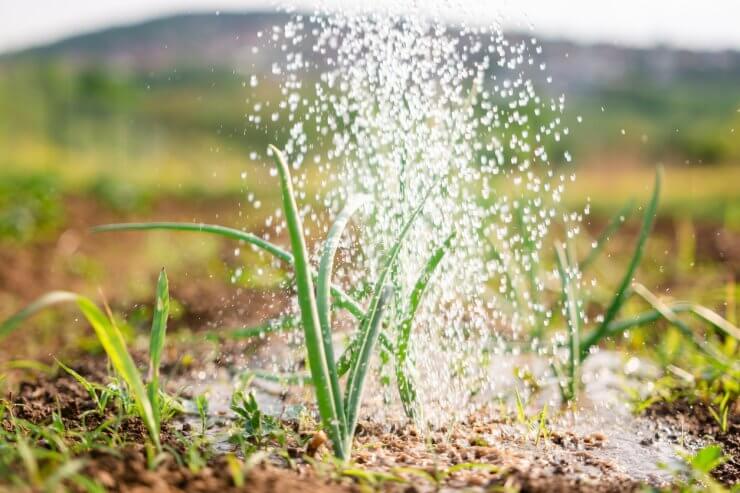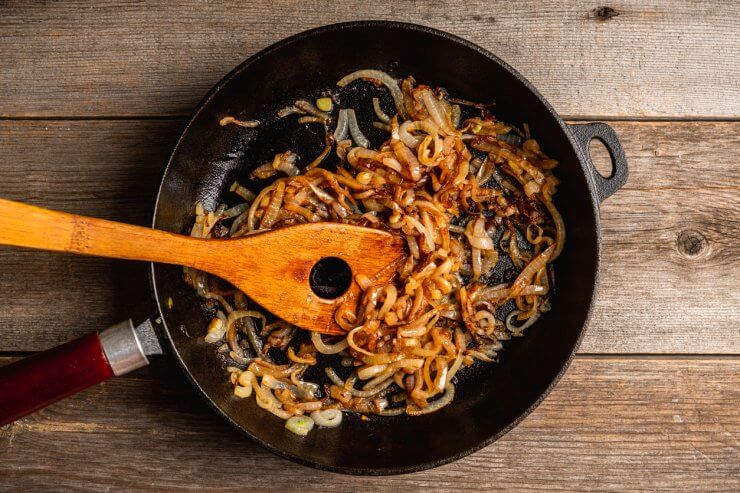
Onions have an undeniable duality. They can make you cry when sliced, yet caramelize into something irresistibly sweet when cooked. The stark contrast in their raw and cooked flavors is the result of intricate biochemical processes—ones that begin in the soil long before an onion reaches the kitchen. Onion sweetness isn’t just about the variety you plant; it’s influenced by sulfur levels in the soil, water availability, and the precise timing of the harvest. Understanding these elements can help both home gardeners and large-scale farmers cultivate the sweetest onions possible.
The Chemistry of Onion Flavor
Central to onion flavor are sulfur-containing compounds known as sulfoxides. When an onion is cut, the enzyme alliinase reacts with these sulfoxides to produce syn-Propanethial-S-oxide, a volatile compound responsible for the eye-watering sensation. This sulfur chemistry also significantly influences an onion’s sweetness.
Onions store carbohydrates in the form of fructans, a type of sugar contributing to their overall taste. In low-sulfur environments, onions tend to accumulate more sugars, resulting in a milder and sweeter flavor. Conversely, in high-sulfur soils, onions produce more pungent compounds, which can overshadow their inherent sweetness.
Sulfur Levels in Soil: Striking the Right Balance
Sulfur is essential for plant growth, aiding in the formation of key amino acids. However, excessive sulfur can lead to overly sharp onions. Soil sulfur levels depend on various factors, including underlying bedrock, past fertilization practices, and rainfall patterns.
In regions like Georgia, where the renowned Vidalia onion is cultivated, the soil is naturally low in sulfur, allowing onions to develop their characteristic mild, sweet taste. In contrast, onions grown in sulfur-rich soils, such as those in parts of Texas, tend to be more pungent.
For home gardeners, soil testing is invaluable. To reduce sulfur levels, avoid high-sulfur fertilizers like ammonium sulfate and opt for balanced fertilizers that provide necessary nutrients without excess sulfur. Incorporating compost and organic matter can also help lower available sulfur while supplying essential nutrition.

The Role of Water in Onion Sweetness
Water availability plays a crucial role in onion flavor development. Comprising approximately 89% water, onions are sensitive to soil moisture fluctuations, which can directly impact sugar accumulation.
Maintaining a consistent watering schedule helps onions sustain steady sugar production. Water scarcity can stress onions, leading to smaller bulbs and a more concentrated pungency due to the buildup of defensive sulfur compounds. Conversely, overwatering can dilute flavor by reducing sugar concentration.
Implementing drip irrigation or soaker hoses is an effective way to maintain even moisture levels without over-saturating the soil. The goal is to keep the soil damp but not waterlogged, especially in the weeks leading up to harvest when sugar accumulation peaks.
Timing the Harvest for Maximum Sweetness
Harvest timing is a controllable factor in determining onion sweetness. Onions continue to develop their flavor profile until they are harvested.
The optimal time to harvest for peak sweetness is when the tops begin to yellow and naturally fall over, indicating that the plant has completed its growth cycle and stored the maximum amount of sugars in the bulb.
Post-harvest curing also influences sweetness. Allowing onions to cure in a dry, well-ventilated area for two to three weeks helps develop their final flavor and extend shelf life. During this period, excess moisture evaporates, concentrating the sugars within the bulb.

Caramelized Onions
The Sweetest Onion Varieties
While soil, water, and timing influence an onion’s final taste, selecting the right variety is crucial. Some onion varieties are naturally sweeter due to their genetic makeup. Notable examples include:
- Vidalia Onions (Georgia, USA) – Grown in the low-sulfur soils of Georgia, these onions are among the sweetest globally.
- Walla Walla Onions (Washington, USA) – Known for their mild flavor, Walla Walla onions thrive in the Pacific Northwest’s climate.
- Maui Onions (Hawaii, USA) – Cultivated in Hawaii’s volcanic, low-sulfur soils, these onions have a uniquely sweet taste.
- Texas 1015 Onions (Texas, USA) – Developed for low pungency, these large onions are known for their mild flavor.
Growing the Sweetest Onions at Home
For those aiming to cultivate sweet onions in their gardens, consider the following best practices:
- Choose a Low-Sulfur Fertilizer – Opt for compost and organic matter instead of high-sulfur fertilizers.
- Plant Sweet Varieties – Select naturally sweet onions like Walla Walla or Vidalia types.
- Maintain Consistent Moisture – Use drip irrigation to ensure steady water availability without over-saturating the soil.
- Monitor Soil Conditions – Conduct soil tests to determine sulfur levels and make necessary amendments.
- Harvest at the Right Time – Wait until tops naturally fall over before pulling bulbs from the ground.
- Cure Properly – Allow onions to dry in a shaded, well-ventilated area for two to three weeks before storage.
Onion sweetness is not just a matter of genetics—it’s a balance of chemistry, soil conditions, and timing. By understanding how sulfur levels, water availability, and harvest timing interact, growers can produce onions that are bursting with natural sweetness. Whether you’re a home gardener or a commercial farmer, these insights into onion flavor development can help ensure a flavorful, delicious harvest year after year.
What are your favorite types of onions to plant? How do you ensure onion sweetness in your garden?


 Previous
Previous


Excellent article!! I’ve been growing onions for the last 5 years. My harvests have been just “ok”. With the information provided in this article I’m sure to have an outstanding crop this year. Thank you!